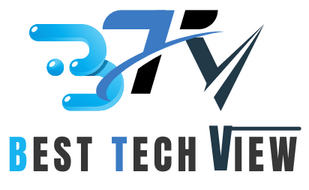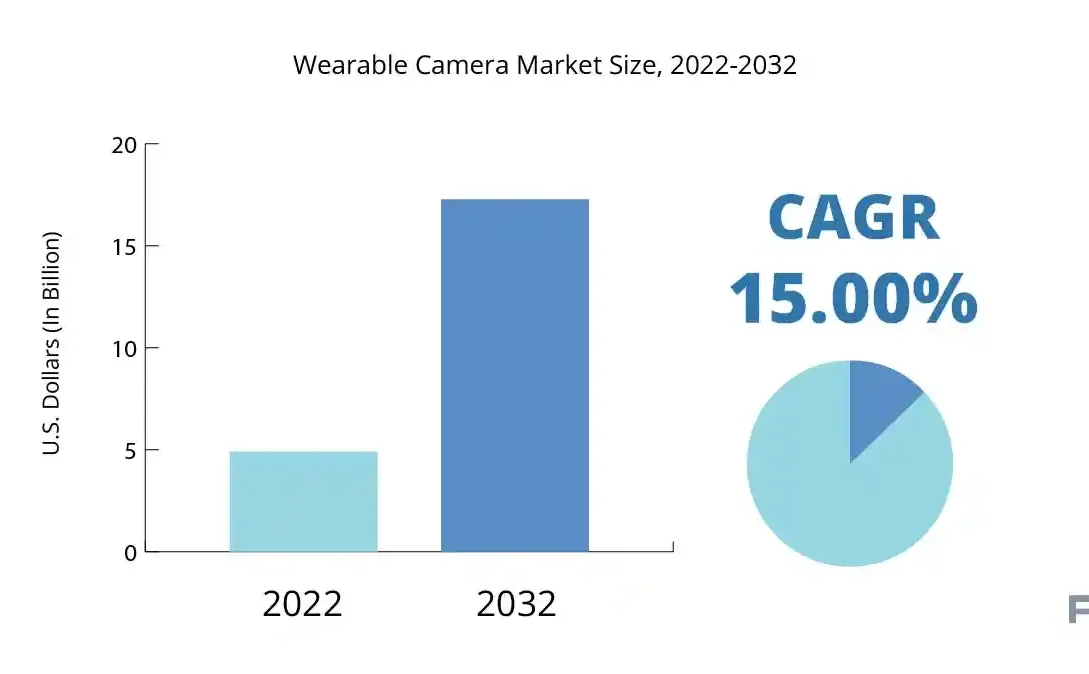Wearable Cameras for Journalism: How are these innovative devices transforming the world of news reporting? As journalists seek new ways to capture real-time stories and enhance audience engagement, wearable cameras have become an essential tool in their arsenal. Could these compact devices redefine journalism in the coming years?
Wearable cameras allow journalists to record hands-free, capturing authentic, live footage from their perspective. These devices enhance mobility, provide better safety, and offer a level of immersion that traditional cameras cannot match.
From body cameras to action cams, journalists can now access tools that keep them closer to the action.
Curious how wearable cameras are impacting journalism today? Let’s dive deeper into how these devices are reshaping the industry and revolutionizing the way stories are told. Stay with us to explore insights from experts and real-life examples!
Introduction To Wearable Cameras
Wearable cameras are changing the way journalists work. These small devices can capture events as they happen. They are worn on the body, allowing journalists to work hands-free. This new technology provides a unique perspective on news stories.
Emergence In Journalism
Wearable cameras have become popular in journalism. They allow reporters to film live events without holding a camera. This technology first appeared in sports and action filming. Now, journalists use wearable cameras for news reporting.
- Live streaming of events
- Hands-free operation
- Enhanced viewer experience
Key Features
Wearable cameras come with many useful features. They are small and lightweight, making them easy to wear. Most have high-definition video quality. Some can even record audio and have night vision. Here are some key features:
| Feature | Description |
|---|---|
| High-Definition Video | Records clear and sharp videos. |
| Audio Recording | Captures sound along with video. |
| Night Vision | Allows filming in low light. |
| Lightweight | Easy to carry and wear. |

Credit: www.theguardian.com
Types of Wearable Cameras Used in Journalism
1. Body Cameras
Body cameras are among the most commonly used wearable devices for journalists. Often worn on the chest or shoulder, these cameras offer a stable platform for capturing high-quality video.
They are discreet, making them ideal for capturing footage in sensitive or private situations without drawing attention.
2. Glasses Cameras
For even more subtle recording, glasses cameras provide journalists with the ability to capture footage from their perspective.
These cameras are integrated into stylish eyewear and can record video hands-free, making them perfect for undercover journalism or for reporting in environments where traditional cameras would be intrusive.
3. Head-Mounted Cameras
Head-mounted cameras, such as those worn on helmets or attached to hats, offer a wide field of view and are ideal for capturing action in fast-paced environments.
These cameras provide a point-of-view shot that can be incredibly engaging for viewers, making them a popular choice for investigative and adventure journalism.
4. Action Cameras
Small, rugged, and waterproof, action cameras such as GoPro are designed for extreme conditions. These cameras are perfect for journalists covering extreme sports, natural disasters, or other physically demanding situations.
They offer high-quality footage and can be mounted in a variety of locations, providing different angles and perspectives.
How Wearable Cameras Are Transforming Journalism
Revolutionizing News Reporting
Wearable cameras are reshaping journalism by enabling real-time reporting. With instant recording and live streaming capabilities, journalists can deliver breaking news as it happens, keeping audiences informed in an increasingly fast-paced digital world.
This technology provides an unfiltered, on-the-ground perspective, giving viewers direct access to unfolding events.
Strengthening Trust and Transparency
In a time of widespread misinformation, wearable cameras offer a solution by increasing media credibility. These devices capture first-hand footage, reassuring audiences that what they see is authentic and unaltered.
This level of transparency is crucial for fostering trust between journalists and their viewers, particularly when covering sensitive or contentious issues.
3. Elevating Audience Engagement
With changing media consumption habits, journalists must adapt to keep audiences engaged. Wearable cameras create an immersive, first-person experience that draws viewers in, making them feel like part of the action.
This innovative approach adds authenticity and excitement that traditional reporting often lacks.
Enhanced Mobility
Wearable cameras are changing journalism. They offer enhanced mobility for reporters. Journalists can now move freely. This means better coverage of live events.
Hands-free Operation
Wearable cameras allow for hands-free operation. Reporters can focus on their tasks. They don’t need to hold a camera. This increases their efficiency.
- Capture videos while taking notes
- Conduct interviews without distractions
- Move freely in crowded places
With hands-free cameras, journalists can perform multiple tasks. This is very useful in fast-paced environments.
Real-time Reporting
Wearable cameras enable real-time reporting. Reporters can broadcast live. This provides instant updates to the audience.
| Feature | Benefit |
|---|---|
| Live Streaming | Immediate news coverage |
| Instant Upload | Quick sharing of footage |
Real-time reporting keeps viewers engaged. It also builds trust with the audience. They get news as it happens.
Improved Safety
Wearable cameras for journalism significantly enhance safety. Journalists often face dangerous situations. These cameras provide an extra layer of security. They capture real-time footage, serving as a deterrent to potential threats.
Additionally, they offer a discreet way to document events.
Risky Situations
Journalists frequently find themselves in risky situations. They cover protests, war zones, and natural disasters. A wearable camera can be a lifesaver. It records everything, providing evidence if something goes wrong.
- Protests can turn violent quickly.
- War zones are unpredictable and dangerous.
- Natural disasters create chaotic environments.
Having a wearable camera ensures that journalists have a record of their experiences. This can be crucial for their safety and for the stories they cover.
Discreet Recording
Discreet recording is another significant advantage. Wearable cameras are small and easily concealable. They allow journalists to capture sensitive situations without drawing attention.
Here are some benefits of discreet recording:
- Reduces the risk of being targeted.
- Allows for natural, unaltered footage.
- Enables journalists to blend in with the crowd.
Discreet recording helps journalists do their jobs more effectively. It ensures they can document events without compromising their safety.
Ethical Considerations
Wearable cameras offer new ways to report news. They provide unique perspectives and real-time footage. Yet, using them raises important ethical issues. Journalists must navigate these issues carefully.
Privacy Concerns
Privacy is a big concern with wearable cameras. Recording people without their knowledge is invasive. It can harm their personal lives.
Journalists need to respect privacy. They must avoid recording in private places. These include homes, hospitals, and bathrooms.
Public places also need consideration. People may not want to be recorded. Journalists should think about this before filming.
Respecting privacy is key. It builds trust with the audience and those being filmed.
Consent Issues
Consent is crucial in journalism. People should know they are being recorded. They should agree to it.
Getting consent can be tricky. Journalists often film in busy areas. They can’t ask everyone for permission.
There are solutions. Journalists can announce their presence. They can wear visible badges or stickers. These show they are recording.
Written consent is best. It provides clear proof of agreement. Verbal consent is also useful. It can be recorded as part of the footage.
Journalists should aim for transparency. Being open about recording builds trust.
Technological Advancements
Wearable cameras have revolutionized journalism. They offer new ways to capture stories. Technological advancements have made them even better. Let’s explore these improvements.
High-resolution Footage
High-resolution footage is essential for clear and detailed videos. Today’s wearable cameras can record in 4K and even 8K. This provides stunning visuals for news stories. Reporters can capture every detail with crystal-clear clarity.
- 4K resolution is 3840 x 2160 pixels.
- 8K resolution is 7680 x 4320 pixels.
- High resolution means better zoom and editing options.
Battery Life Improvements
Longer battery life is crucial for journalists. It allows them to cover stories without interruptions. Recent advancements have greatly improved battery life.
| Battery Type | Average Life | Benefits |
|---|---|---|
| Lithium-Ion | 8-10 hours | Lightweight and long-lasting |
| Graphene | 12-15 hours | Quick charging and durable |
Wearable cameras now have batteries that last all day. This ensures journalists never miss important moments.
Case Studies
Wearable cameras are transforming journalism. This technology captures real-time events and offers unique perspectives. This section dives into various case studies, showcasing how wearable cameras change the game for journalists.
Field Reports
Wearable cameras are perfect for field reports. Journalists can record live events effortlessly. They offer a hands-free solution, allowing journalists to focus on their work. Let’s look at some notable examples:
| Journalist | Event | Outcome |
|---|---|---|
| Jane Doe | Protest Coverage | Captured real-time confrontations |
| John Smith | Natural Disaster | Provided live updates |
These field reports prove wearable cameras’ effectiveness. They are vital for capturing unfiltered moments.
Impactful Stories
Wearable cameras help in telling impactful stories. Journalists can document events from a first-person perspective. This offers a more immersive experience for the audience.
- Documenting human rights violations.
- Capturing environmental issues.
- Showing daily life in conflict zones.
These stories become more relatable and powerful. They evoke empathy and awareness in the audience.
Wearable cameras are truly revolutionizing the field of journalism. They provide new ways to tell stories and report events. These case studies highlight their importance and potential.
Challenges And Limitations
Wearable cameras are changing journalism. They offer unique perspectives and real-time reporting. But, they come with challenges and limitations. These issues can affect their effectiveness in the field.
Technical Issues
Technical issues are common with wearable cameras. They often suffer from battery life problems. A journalist might miss important moments due to a dead battery.
Another issue is storage capacity.
High-definition videos take up a lot of space. Journalists need to manage storage carefully. Additionally, video quality can be inconsistent. Low light conditions can make footage unusable. Cameras may not handle motion well, leading to blurry videos.
| Issue | Impact |
|---|---|
| Battery Life | Missed moments |
| Storage Capacity | Limited recording time |
| Video Quality | Inconsistent footage |
Adoption Barriers
Adoption barriers also exist for wearable cameras. Privacy concerns are a major issue. People might feel uncomfortable being recorded without consent.
Another barrier is cost. High-quality wearable cameras are expensive.
Smaller news outlets may struggle to afford them. Training is also a challenge. Journalists need to learn how to use these devices effectively. This takes time and resources.
- Privacy concerns: Uncomfortable for people to be recorded
- Cost: Expensive for smaller news outlets
- Training: Time and resource-intensive

Credit: www.linkedin.com
Future Prospects
The future of wearable cameras for journalism looks promising. These devices will transform news reporting. They offer unique perspectives and real-time coverage. This section explores innovative uses and industry predictions.
Innovative Uses
Wearable cameras enable journalists to capture events firsthand. They provide an unfiltered view of breaking news. These devices are perfect for covering protests and live events.
Journalists can use them for undercover investigations. The cameras are small and discreet. They can record without drawing attention.
Wearable cameras also enhance interview experiences. Journalists can maintain eye contact while recording. This creates a more engaging interaction.
| Use Case | Description |
|---|---|
| Live Streaming | Broadcast events in real-time to global audiences. |
| Undercover Reporting | Capture evidence without being noticed. |
| Immersive Storytelling | Provide a first-person view of the story. |
Industry Predictions
The wearable camera market is expected to grow rapidly. More journalists will adopt these devices. Future models will offer better resolution and longer battery life.
Artificial intelligence will play a big role. AI can help analyze footage quickly. This will speed up the news reporting process.
Wearable cameras will become more affordable. This will make them accessible to more journalists. Citizen journalists will also benefit from this trend.
- Improved camera quality
- AI integration
- Cost reduction
- Greater adoption by journalists

Credit: www.wired.com
Frequently Asked Questions
What Cameras Do Journalists Use?
Journalists commonly use cameras like the Canon EOS R5, Nikon D850, and Sony A7 III. These models offer high-quality images and reliability.
What Is A Wearable Camera?
A wearable camera is a compact device worn on the body to record photos or videos hands-free. It captures everyday activities and adventures. Wearable cameras are popular for sports, travel, and security purposes. They offer convenience and ease of use.
What Is The Best Hands Free Vlog Camera?
The Sony ZV-1 is the best hands-free vlog camera. It offers excellent video quality, a flip-out screen, and built-in stabilization.
What Are Wearable Cameras For Journalism?
Wearable cameras for journalism are compact devices that journalists wear to capture live footage. These cameras offer hands-free recording, providing flexibility and a unique perspective.
Conclusion
Wearable cameras are revolutionizing journalism by providing unique perspectives and real-time reporting. These devices enhance storytelling and audience engagement. Journalists can now capture and share authentic experiences effortlessly.
Embrace wearable cameras to stay ahead in the evolving media landscape. Adapt and innovate to keep your audience captivated and informed.

A passionate tech blogger and the founder of Best Tech View, a dynamic platform dedicated to all things technology. With a keen interest in the tech, Ahmad strives to provide insightful and engaging content on the latest tech trends, and breakthroughs.


